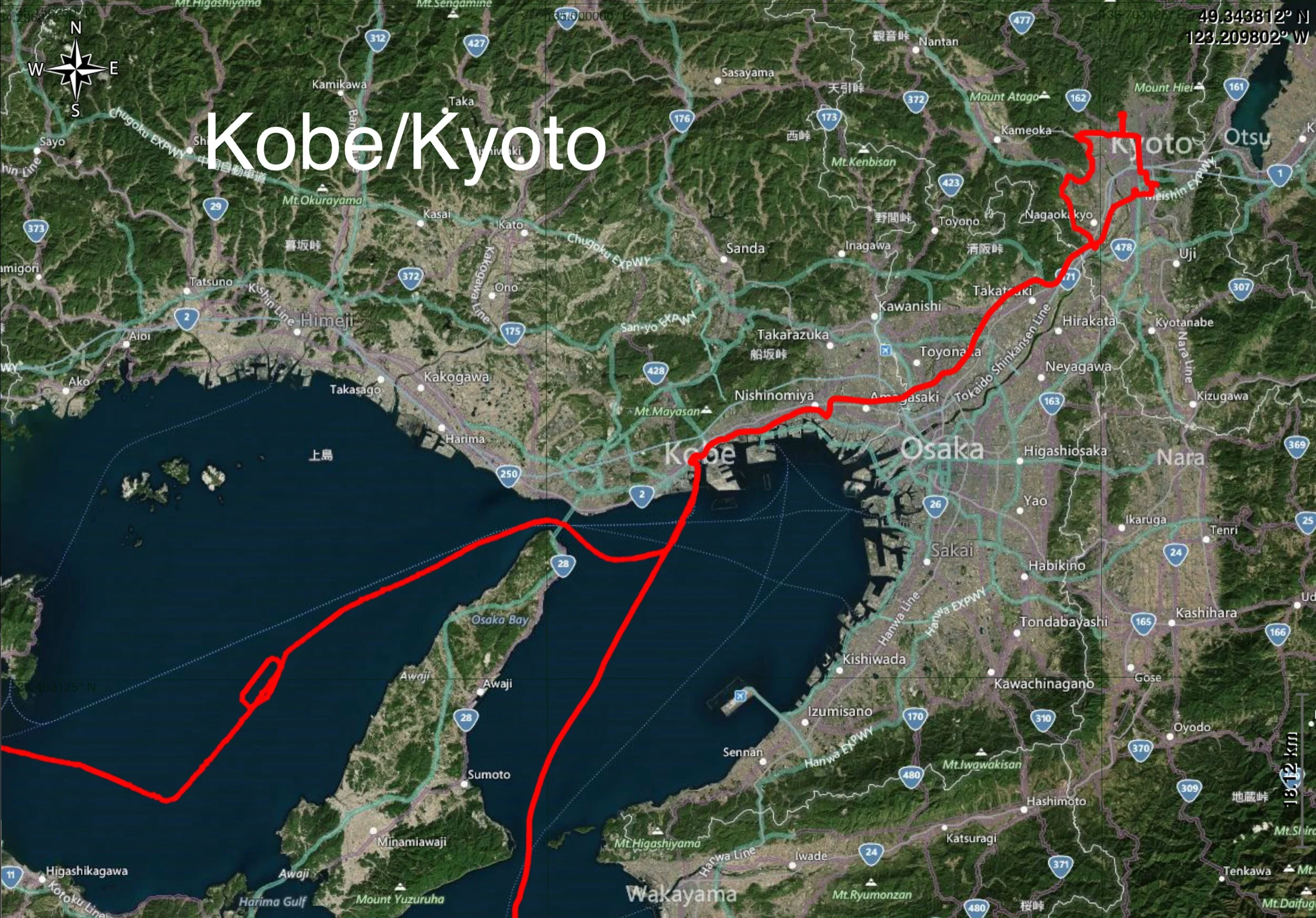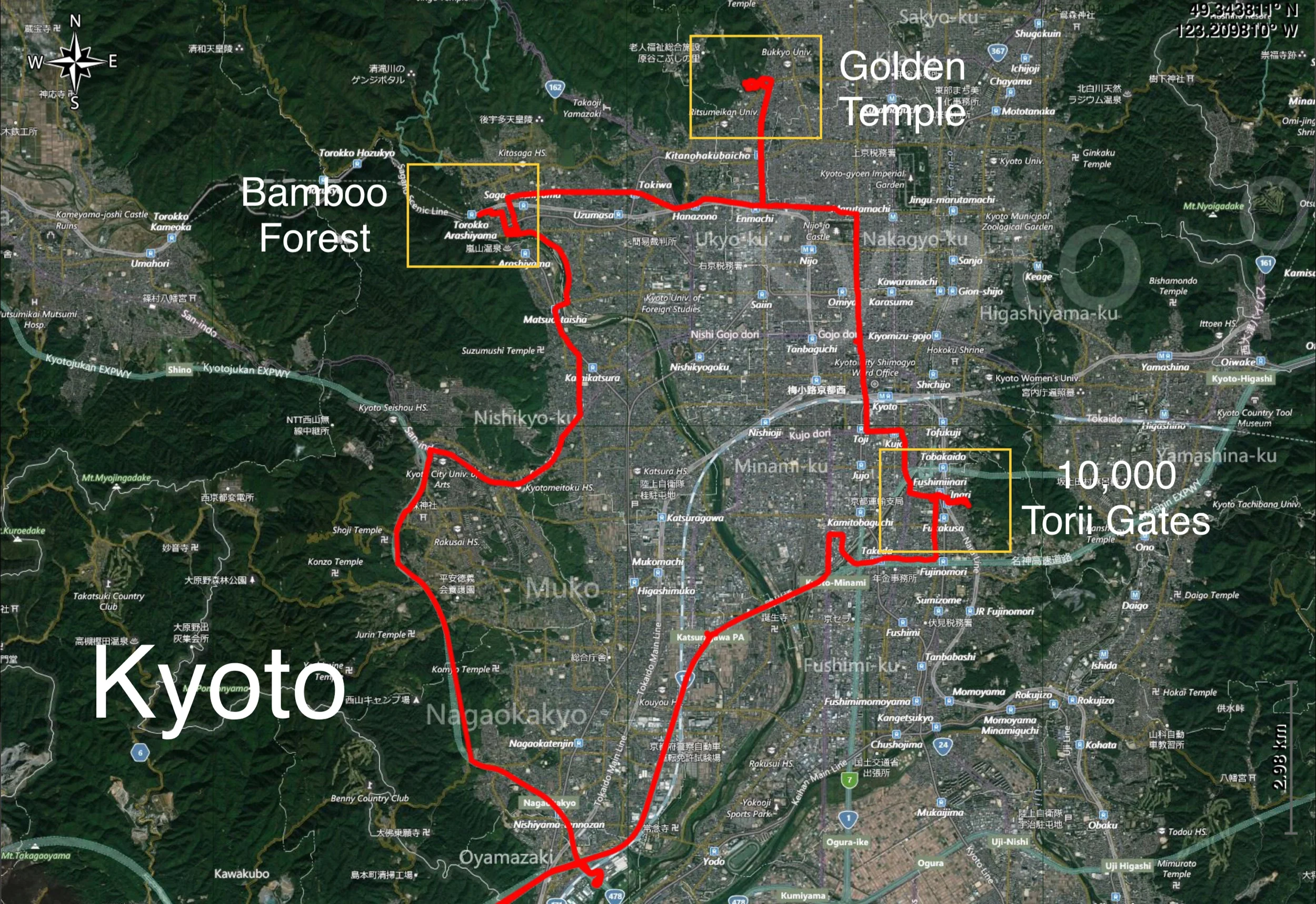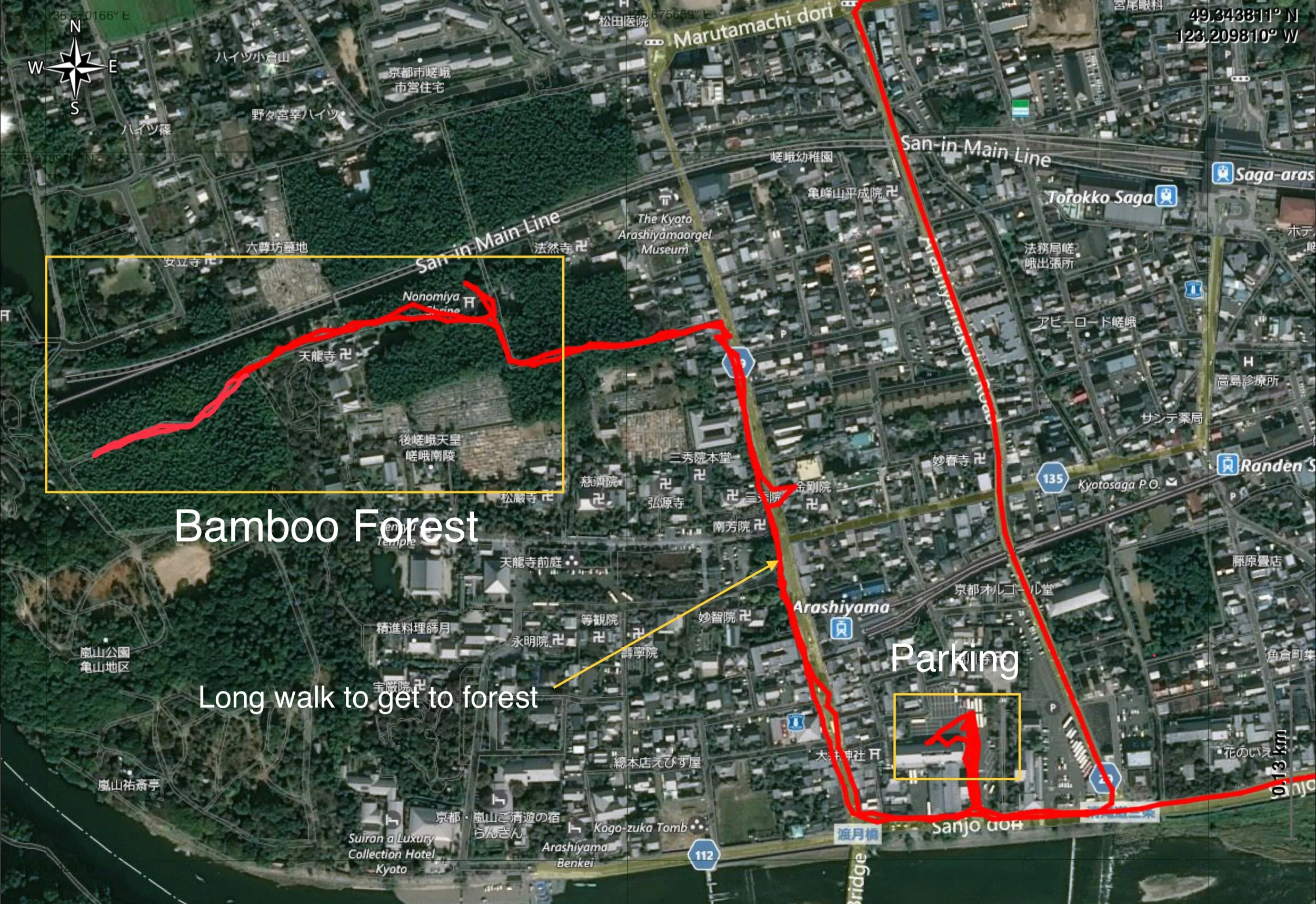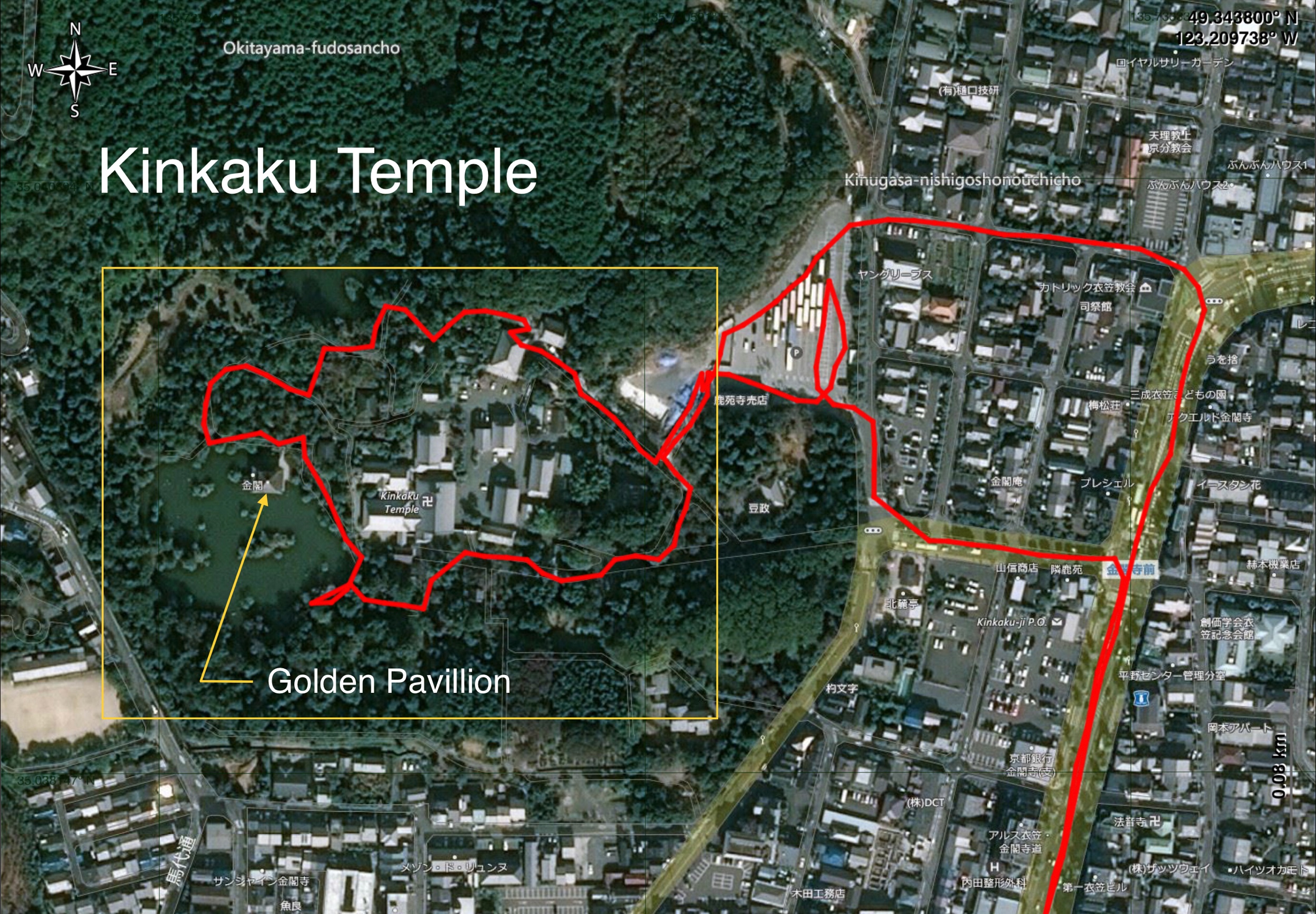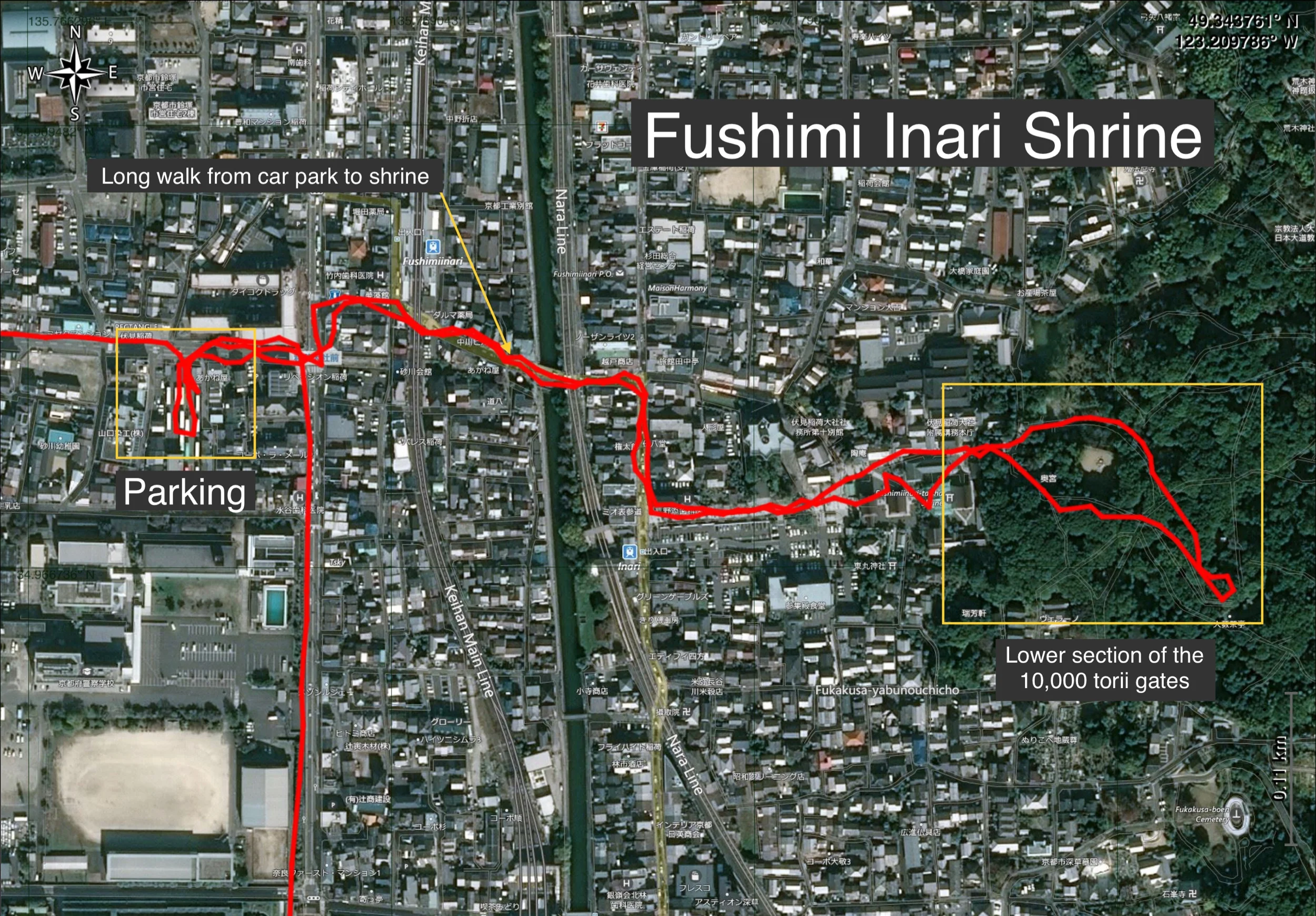Kobe, Hyogo Prefecture & Kyoto, Kyoto Prefecture
May 8-9, 2019
Kobe is Japan’s seventh largest city, and is the capital of the Hyogo Prefecture. Known as one of Japan’s most beautiful cities, it actually didn’t exist in its current form until it was “founded” in 1889. But it was an important city for centuries. Originally, the area developed after the founding of the Ikuta Shrine by Empress Jingū at the beginning of the 2nd century AD.
Kobe became one of Japan’s Designated Cities in 1956 and currently supports a population of roughly 1.5 million people. It first opened its port to trade with the west in 1853, when Japan ended its policy of seclusion. For a long time now it’s been known as a cosmopolitan and nuclear-free zone port city, and is situated on the northern shore of Osaka Bay, about 30 kilometres west of Osaka.
Coming into the Kobe port, which has a very developed waterfront with all sorts of things to keep one occupied.
Our visit here, although only for one day, would also have us visit Kyoto. Residing in a different prefecture from Kobe, Kyoto boasts a population of 1.4 million, but the greater Kyoto metropolitan area has an estimated population of 3.8 million.
Kyoto is one of Japan’s oldest registered cities since it was established as the home of the imperial court by Emperor Kanmu in the year AD794. It was where successive emperors ruled Japan for the following eleven centuries. Fortunately for Kyoto, it largely escaped destruction from World War II, and as a result retained much of its pre-war history and architecture. Today it’s considered the cultural centre of Japan and hosts numerous Buddhist temples, Shinto shrines, palaces and gardens, many of which have been collectively granted the designation of a UNESCO World Heritage Site. We visited a few of these locations during our visit.
Quite obviously, the Kobe port has many services for the shipping industry, which apparently includes the maintenance of submarines.
The truth of it all, is that Kobe, Kyoto and indeed Osaka are really just one enormous city, much like so many of the giant metropolises around the world. Individual small towns keep growing over the decades (or even centuries) until finally, their outskirts collide and they essentially become one. They may maintain separate local governments and services, but for all intents and purposes, they are a single entity. So by mooring in the port location of Kobe, it was a simple matter for our bus transport to easily drive from one location to another. As you can see from the maps above, drive we did…
Fushimi Inari Shrine
This young Japanese girl was fully clad in the beautiful Japanese traditional ensemble. She was there as the focus of some fashion photographers exercise and was actually blocking the tourists from walking down the return path. I took this photo over his shoulder just before a hoard of people finally pushed past him to return to the bottom.
Our first stop of what would turn out to be a very long day was the Fushimi Inari Shrine. A significant Shinto shrine, it is the largest and most important shrine dedicated to Inari, the Shinto god associated with rice, tea and sake. Recognizing how important these three things are to Japanese culture, it’s not surprising that the god Inari is also connected to success and prosperity. It is well know for its thousands of torii gates that straddle the trails that lead up the wooded mountainside behind the shrine buildings. Those trails terminate on the top of the 233 metre high Mount Inari, which is sacred and part of the shrine’s grounds.
One of the Inari foxes standing guard.
Along with the thousands of Torii gates that adorn the paths and hillside, another standout feature conspicuously placed about the shrine buildings are the statues of the Inari fox, or kitsune. These foxes are considered to be the guardians of the shrine and are revered because they are believed to have heightened intelligence and long life. In Japanese culture, the gods often pick animals to act as their messengers or avatars on earth, and in the case of Inari, that choice was the white fox. Many shrines devoted to Inari display fox statues, and many times these wear the colour red, which is the colour of the gods. It’s believed the colour will ward off evil spirits and illness. A number of the kitsune held objects in their mouths. One was holding a key, representing the key to the granaries. Another had a round stone, which symbolizes the spirit of the gods. Another, a scroll which presumably held instructions from the gods.
Despite the fact that this is a real working shrine, it felt more like a tourist attraction because of the number of visitors here during Golden Week, most of whom were not praying or paying homage to Inari. There were also a lot of shops, both on the street leading to the shrine, and even inside the shrine gates that were flogging their wares to the visitors.
That being said, you can’t help but marvel at the architecture and construction of the shrine buildings and the effort it must have taken to build and install all the Torii gates that enclose the various sections of the trail system. We only had time to walk the lower level where the vast number of gates were situated. But it would have been nicer if we had had the opportunity to hike at least part way up the mountain to the first lookout, which apparently has an impressive view of the countryside. Boat tours, eh. What can you do?
The Golden Pavilion
The second stop for the day was to see Kinkakuji, or the Golden Pavilion. Located in the north of Kyoto, it’s a Zen temple that was formerly known as Rokuonji back in the time when it was the country estate for the shogun Ashikaga Yoshimitsu. In accordance with his will, the estate became a Zen temple for the Rinzai sect after his death in 1408.
A golden phoenix rising above the ashes.
What stands this property apart from all others is the finish on the main building. Covered entirely in gold leaf, the top two floors of this odd structure stand out in stark contrast to the brown wood and white plaster of the first floor, and the lush green of its forested surroundings.
What’s odd about this building is that it has three distinctly different architectural styles for each floor. The first floor is built in the Shinden style, which was used for palace buildings during the Heian Period (710-1185). The second floor is built in the Bukke style, which was used in samurai residences, and the third and uppermost floor is built in the style of a Chinese Zen Hall. The second floor is gilded on the outside and third floor is gilded inside and out. A golden phoenix adorns the top of the former residence. Perhaps the phoenix is in reference to the building’s ability to continually rise from its own ashes.
Over the centuries the building has burned down several times, the last being in 1950 when it was set alight by a deranged monk. After that incident the structure was rebuilt in 1955, and it is that structure that visitors get to enjoy today.
ARASHIYAMA Area
One very out of place tree in the bamboo grove. There’s always got to be one, right?
Located in Kyoto’s northwest region, countless tourists visit Arashiyama each year to marvel at its many attractions. World-renowned for the amazing bamboo grove, it also boasts incredible scenery that just gets more beautiful with each changing season.
This area has numerous temples, old imperial villas, and famous historical sites. Many of these wonders are identified as National Treasures, with some being recognized as UNESCO World Heritage sites. The entire region is designated by the Japanese government as a Place of Scenic Beauty.
As with many areas in Japan, the roads can sometimes be so narrow that large vehicles like tour buses are unable to get right to the point of interest. This area is just such a location. We had to park some distance away and then walk through the streets until we got to our intended destination. The upside of this inconvenience, however, is that you get to experience what it’s like to live in such places, and see how locals do things. Sometimes the best part of a tour is seeing what you do before you even get to the focal point.
Nonomiya-jinja Shrine
The first “official” stop for our tour of Arashiyama was at the Nonomiya-jinja Shrine. Completely different for the shrines we had visited, this one was conspicuous by virtue of its small size. While most of the other shrines and temples we had seen in Japan were large, almost ostentatious in their bearing, the Nonomiya-jinja Shrine was tiny in comparison. Clearly it mirrored its philosophy in its appearance. There may have been more to this shrine than what we could see, but these photos show the extent of what was available to us mere tourists.
Bamboo Grove
Further along our walk, up a laneway behind a residential area and the Unesco World Heritage Site, Tenryu-ji Zen Temple, was the well photographed Bamboo Grove. It was simply a nice pathway though a very tall grove of bamboo trees stretching seemingly into infinity. But of course it did have boundaries. Below are a few shots from our amble up the path.
Ambling About the Harbour
Once we got back to the ship after a long day touring about, there was still enough time that we could get out and walk around the harbour to have a look at what we could see from the deck of the ship. There were some sea related activities like harbour tours on boats etc., but most of what was across the port was a large shopping mall and outside amusement park. What stood out to us as we walked about was all of the sea defences that were in place to guard against tsunami. Everywhere we looked there were massive walls and automatic gates that would deploy to protect the land from incoming high waves. They didn’t look very tall, but of course they were erected on the dock level which was already two metres above sea level.
It was interesting when going into the shopping mall just how much western themed stores there were. Strange that a society like the Japanese, who find it a matter of honour to produce near perfect things, would be interested in the junk dreamed up in North America, and made in China.
Although the weather had turned a little less pleasant, we wondered about outside for a little while longer. Here are a few of the scenes we saw.
Leaving Kobe Port
Like so many times before, right on schedule our captain issued the order to let slip the lines holding us to the dock, and then gently guided the ship out of the port and on to our next destination near Mount Fuji.


